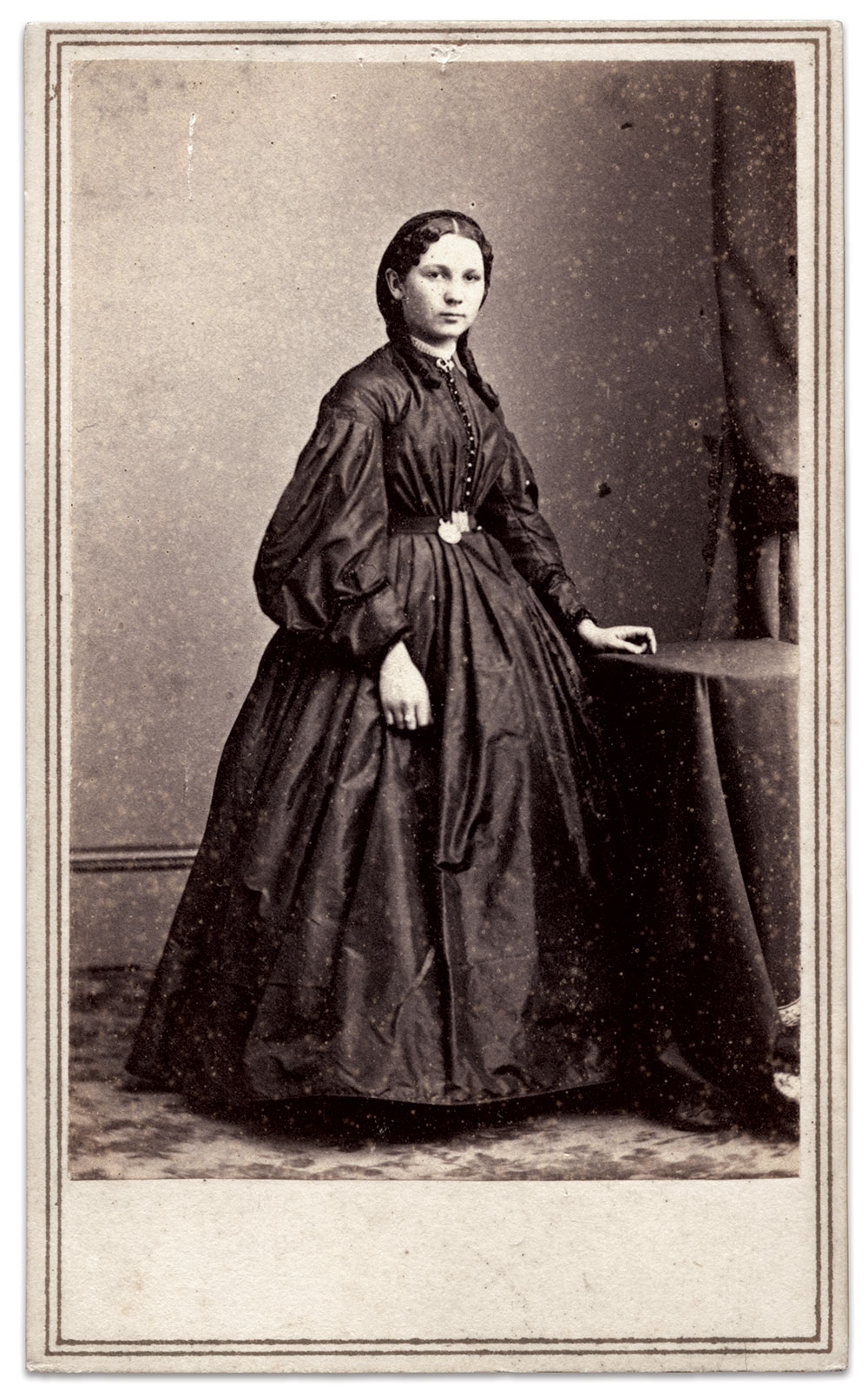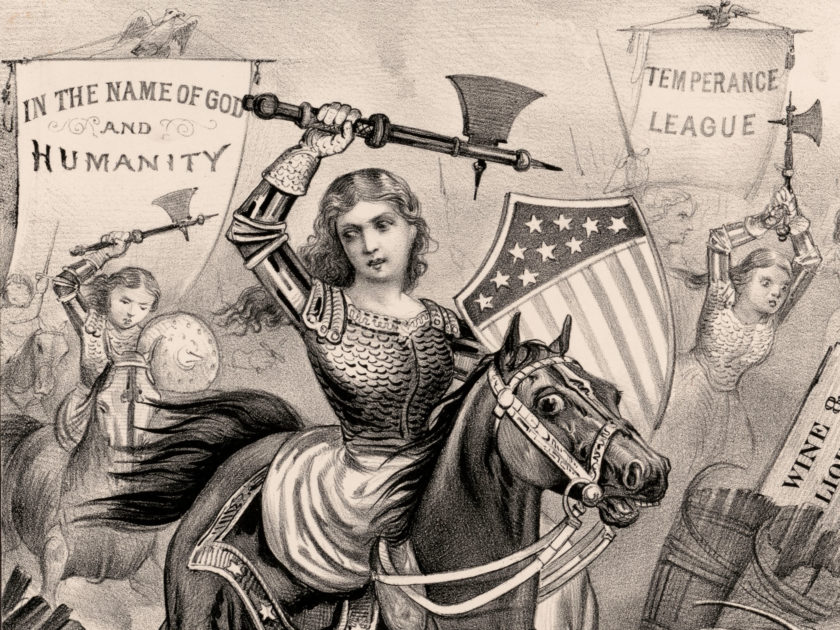By Richard L. Leisenring, Jr.
At the height of the Civil War, a young lady arrived in the United States on a crusade.
Miss Susannah Evans traveled from Aberdare, Wales, to fight the war against the evils of alcohol, just as she had done in her homeland. From the moment the 15-year-old stepped foot in America in August 1863, she focused her energies on saving young men from this drastically rising social ill.

Evans gained notoriety in the United Kingdom as a temperance speaker at age 11. How she came to be an outspoken activist while other children her age busied themselves with being kids began with her father, Samuel, who struggled with alcohol. His addiction was made worse by his job as keeper of a public house, where he lived with Susannah and her mother, Anne.
In a biographical sketch published two years before her American journey, Evans revealed how she ran away from the public house—and her parents—at age 5 to live with her grandparents.
“I could never put up with its customers,” she explained. “I could not put up with the lewd songs there sung, and the blasphemous oaths there uttered—I could not witness the casting of dice, and the shuffling of cards, and the rattle of the ball on the bagatelle board. I always looked at a public-house as a slaughter-house to butcher human souls, and I always felt anxious that every public-house in the land should be closed.”

All the public houses did not close. But her father eventually shut down his establishment and signed a temperance pledge at her urging. The family reunited, and bolstered by strong Christian faith, achieved positive and lasting change to their home life. Their story captured the attention of neighbors, and an enterprising Evans responded by composing “a little lecture upon my father’s turn right about face from the mouth of hell to the field of hope.” She delivered the message to a congregation at a chapel in her hometown of Tredegar. Her parents attended. Evans’ words moved many to sign the temperance pledge—and launched her on a series of speaking tours that popularized her name and cause and added names to the growing list of those who swore off alcohol.
Upon her arrival in America with her reformed father in tow, the press introduced her as the “Cambrian Oratress.” She became an instant success, having quickly overcome prejudices of many prominent citizens against allowing a woman, especially a young lady, to lecture in public. Her eloquence, intelligence, maturity, and the ability to conceal the accent which high society found crude, won them over. Temperance societies, churches and soldier aid groups across the Northern states sought her aide to promote the cause. She was in as much demand as the likes of Harriet Beecher Stowe, John B. Gough and Emily Dickinson.
Unlike many speakers, Evans peppered her talks with humor and incorporated metaphors such as “Muzzle the Dog” and “New Pictures in Old Frames.” According to one wry news report, youthful soldiers that attended her orations were captured by her beauty and voice. They surrendered in droves to her cause and only were paroled after signing a pledge of abstinence.
To fund her daily living and tour expenses, she accepted a modest fee or a portion of the 10 to 50-cent admission per person to attend the lectures. The bulk of the proceeds went to the organizations that sponsored her appearance.

In late 1863, Evans began posing for photographs. At the close of each engagement, her father presented a display of her cartes de visite and offered them for sale at 25 cents each to the crowd, much in the same way popular speakers such as abolitionist and suffragette Sojourner Truth and others did.
At first, Evans pocketed sales from the cartes de visite as supplementary income for herself and her father. Beginning in January 1864, she began donating part of her carte de visite proceeds to the U.S. Sanitary Commission. She set a goal of contributing $1,000 before the end of the year. Surviving records indicate she handed over at least $500 to the Commission, which equates to the sale of roughly 2,400 photographs.
Evans’ travels across the Union states exposed her to other social ills. She became especially moved by the plight of wounded and maimed soldiers on the streets of New York City without an adequate source of income. In late 1865, she put her temperance crusade on hold to address the discarded wounded veteran.

Evans took a special interest in the condition of one veteran not much older than herself, Sgt. Alfred A. Stratton of the 147th New York Infantry, who had suffered a terrible wound at Petersburg that cost him both arms. How they met remains a mystery.
Evans set out to personally help him. In October 1865, she held two well-attended fundraising lectures on his behalf. The first, in New York City at the Cooper Institute, included Maj. Gen. Joseph Hooker and staff in the audience. The second event occurred at the Young Men’s Christian Association in Brooklyn, where she shared the stage with the disfigured sergeant.
At both events, Evans lectured about the importance of supporting the nation’s wounded and gave stirring readings of a poem entitled “The Soldier’s Empty Sleeve.” She turned over the net proceeds from the two engagements to Sgt. Stratton. Local newspapers reported that Evans raised a respectable sum from the 25-cent admission price and additional donations.
Coincidentally, Stratton, like Evans, began to sell cartes de visite of himself about this time to supplement his pension. He even engaged one of the same photographers hired by Evans, Marcus Ormsbee of New York City.
Her success in the case of Stratton prompted her to broaden her repertoire to include patriotic appeals, support of widows and orphans, and women’s roles in society. The indefatigable teenager gave an uncounted number of lectures, sometimes two or three in one day, to crowds numbering as high as 2,000. As always, her speaking fees and carte de visite revenues replenished the coffers of a number of charities to the betterment of society.

In 1867, Evans and her father concluded their tour and returned to Wales to rest and to continue her work.
Two years later, the Cambrian Oratress returned to America permanently and settled in Brooklyn. She became a major proponent of the National Temperance Society and a prominent lecturer for the National Women’s Temperance Union. In 1875, at age 27, she wed James Peck, a church organist in Brooklyn. She expanded her lectures to address other social problems that plagued the U.S. and Canada during the latter part of the century, including hygiene, tobacco use and education. But she always kept focused on her core subject, temperance. Evans remained active up to her passing one month shy of her 84th birthday on Jan. 11, 1932.
Though her name and deeds have faded away, reform-minded women and men that followed built on the mission Evans dedicated her life’s work. Her legacy reverberates today.
References: Evans, Biographical Sketch of Miss Susannah Evans; New York Times, Sept. 9, 1863, and Oct. 2, 1865; Journal of the A.T.U. and N.Y. Prohibitionist, October 1863 and February 1864; Brooklyn Daily Eagle, Brooklyn, N.Y., Jan. 22, 1864, and Oct. 17, 1865; Fall River Daily Evening News, Fall River, Mass., Feb. 16, 1864; Portland Transcript, Portland, Maine, March 26, 1864; Syracuse Daily Courier and Union, Syracuse, N.Y., Jan. 24, 1865; Detroit Free Press, Detroit, Mich., Jan. 1, 1865; Daily Milwaukee News, Milwaukee, Wis., June 25, 1865; Daily Ohio Statesman, Columbus, Ohio, Feb. 23, 1866; North Wales Chronicle, Bangor, Wales, June 30, 1866; Toronto Mail, Toronto, Canada, May 11, 1888.
Richard Leisenring, Jr., a native of Hopkinsville, Ky., has been an avid collector of Civil War memorabilia since 1967. He has worked in the museum field and as an historical consultant for 44 years, the last 17 as curator of the Glenn H. Curtiss Museum in Hammondsport, N.Y.
LEARN MORE about Military Images, America’s only magazine dedicated to showcasing, interpreting and preserving Civil War portrait photography.
VISIT OUR STORE to subscribe, renew a subscription, and more.

